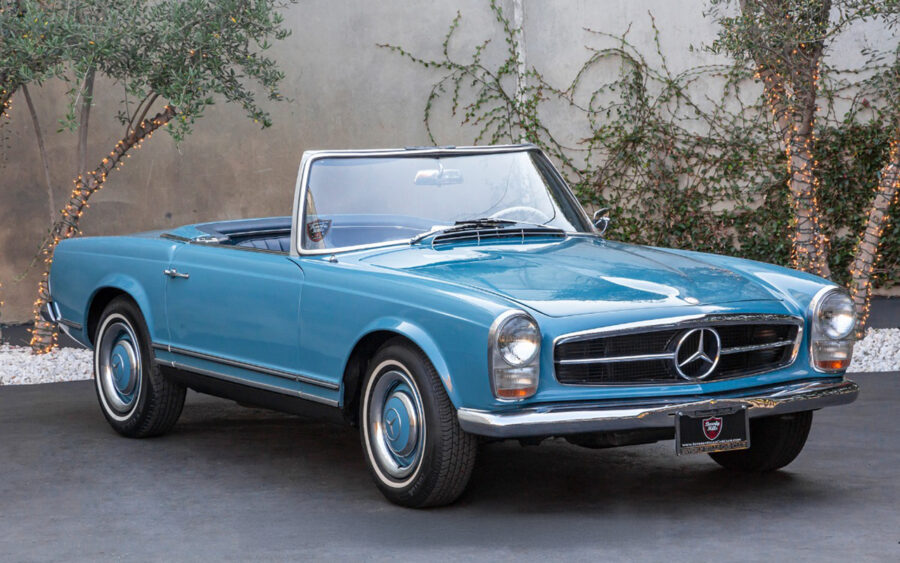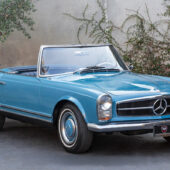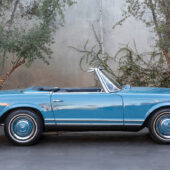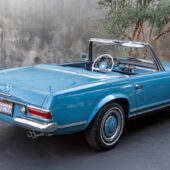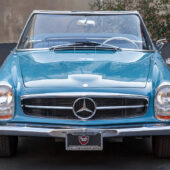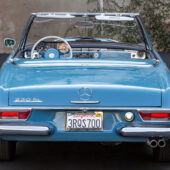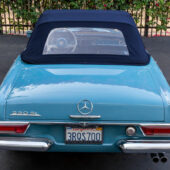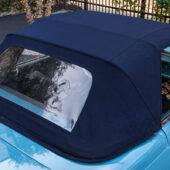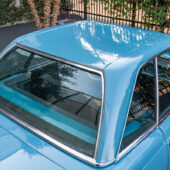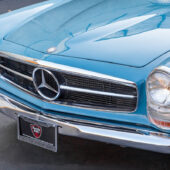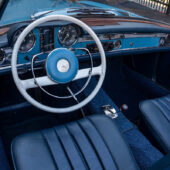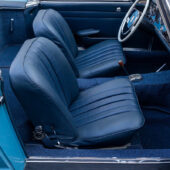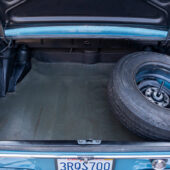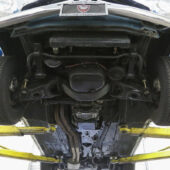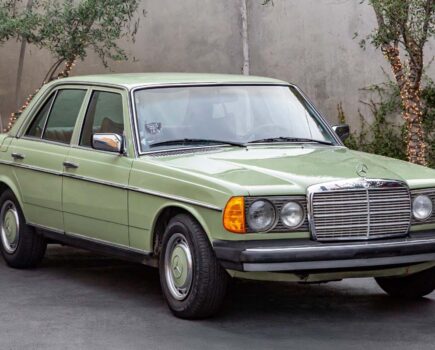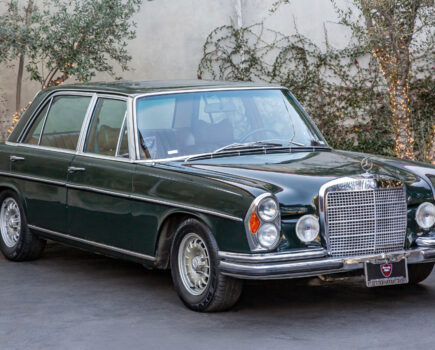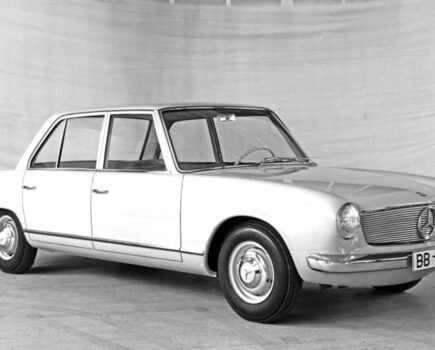An elegant, sophisticated classic roadster – that can be used every day? The ‘Pagoda’ SL is a Mercedes-Benz, after all
Sponsored editorial in association with Beverly Hills Car Club
Words: Jon Burgess
If the next SL wasn’t to be a racer, then on the road it would stay. While the 190 SL of 1955 saw some success, it was a four-cylinder, entry level roadster using the family resemblance it shared with the Gullwing to disguise its lack of performance.
With the emphasis firmly on performance and comfort for the average driver, work commenced on the W113 SL – a car that didn’t need the skill of a battle-hardened wheel man to tame it.
Push a 190 or 300 SL hard and their single pivot rear ends tended to tuck under, leading to a sudden break in traction and usually a spin. Although the back axel remained largely unchanged for the new car, its tyres were a brand new and uniquely developed radial-ply with far higher levels of grip, Mercedes having pushed several manufacturers hard to meet its requirements.
Taking the shortened floor pan of the ‘Fintail’ saloon as a base, the W113 incorporated everything that Mercedes had learned in crash testing to date, including passive safety devices, rigid passenger cells, and crumple zones. Engineer Bela Barenyi, who had more than 2500 patents to his name, honed these life-saving features on the ‘Ponton’ and ‘Fintail’ saloons, and in the SL, created the world’s first roadster so equipped.
Exactly who contributed the most to the finished shape of the W113 SL is up for debate, but it’s best to consider it a three-man effort out of a larger team. Led by Freidrich Geiger, Mercedes’ head of styling, designer Paul Bracq and Bela Barenyi also played significant roles.
At its launch in 1963, the W113’s sharp lines looked like no SL that had gone before. Its elegant lines were bolstered with three mechanically fuel-injected straight sixes, spanning 2.3, 2.5, and 2.8 litres.
The 230SL appeared first, and lasted until 1967. Available with a four-speed, fluid-coupled automatic or a four-speed manual, a ZF five-speed became available in 1966.
The single year-run, seven-bearing 250SL (5196 built) offered greater range thanks to a larger fuel tank, and better stopping power with the rear disc brake axle that was now fitted; the greater weight was offset with a higher peak torque rating of 159 lb/ft. During the 250SL’s run, the California Coupe arrived: a 2+2 with a fold-down bench where the folded soft top would go, the hood was left off, and a hard-top fitted in its place, instead.
US safety legislation and emissions laws created the 280SL of December 1967, with a revised, padded interior and a more powerful 2.8-litre engine which finally answered those critical of the SL’s performance. With detail changes (such as optional Fuchs alloys from 1969), the 280 SL saw the W113 out until 1971, it being the last outing for the storied M130 six-pot; with the arrival of the R107 in 1972, an all-new M110 twin cam six took its place.
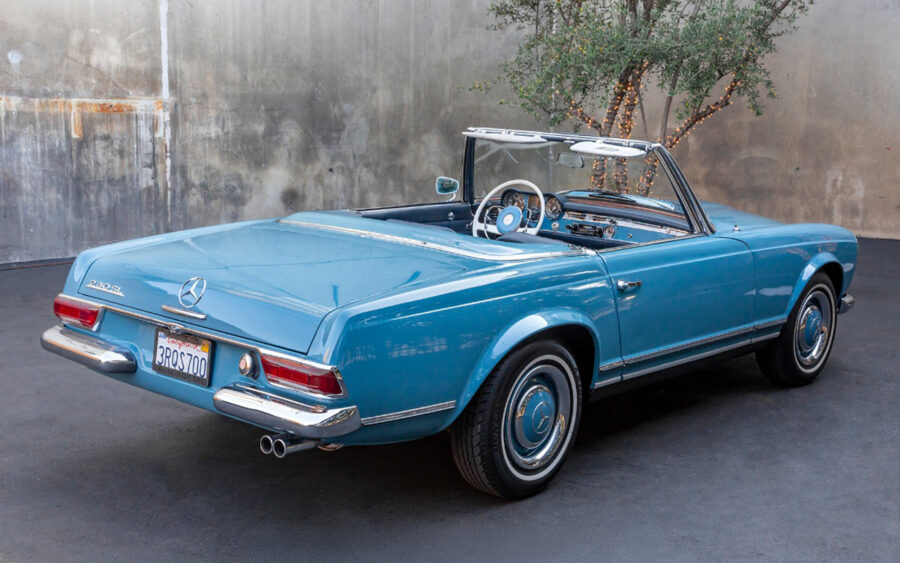
Engine, transmission and mechanicals
While a strong engine if looked after, the M127 (2.3-litre), M129 (2.5-litre) M130 (2.8-litre) sixes do have weaknesses: their Bosch fuel-injection system isn’t really repairable at home if problems arise. The worst thing you can do is leave a W113 sitting: the cooling system will soon fail without the proper corrosion inhibitors, with a blown head gasket the worst case scenario.
Regular oil changes (2500-5000 miles) are crucial, as the fuel injection pump uses a small quantity of engine oil in operation. Dirty oil will kill the pump in short order: while they’re expensive, they remain available, and repairable at home if you’re confident with mechanical fuel injection systems. The 250SL is regarded as the worst for injection pump removal, as it has an oil cooler directly beneath. Leaving a car to sit can cause the pipework to rust and the injectors to block up.
Keep an eye on the fuel filler neck too, particularly if your SL is laid up for long periods of time. If the rust spreads far enough, it can reach the tank – and while replacements are available, they’re expensive and not particularly pleasant to replace at home.
If you’ve got an automatic, check the levels for the fluid coupling every month or so: said fluid is working even harder than in a torque convertor unit. It needs to be red, rather than black or brown. Every two years is an ideal interval, particularly as W113s (but not all) tend to do lower mileages these days.
Over time, the engine and suspension subframes will wear out: if you’re getting a lot of undue vibration and harshness idling and on the move, they need investigating.
Make sure your grease gun is working, too: there are seven either side of the front suspension, one on the driveshaft, and two on the rear axle. A workshop manual will best explain the intervals and lubrication requirements.
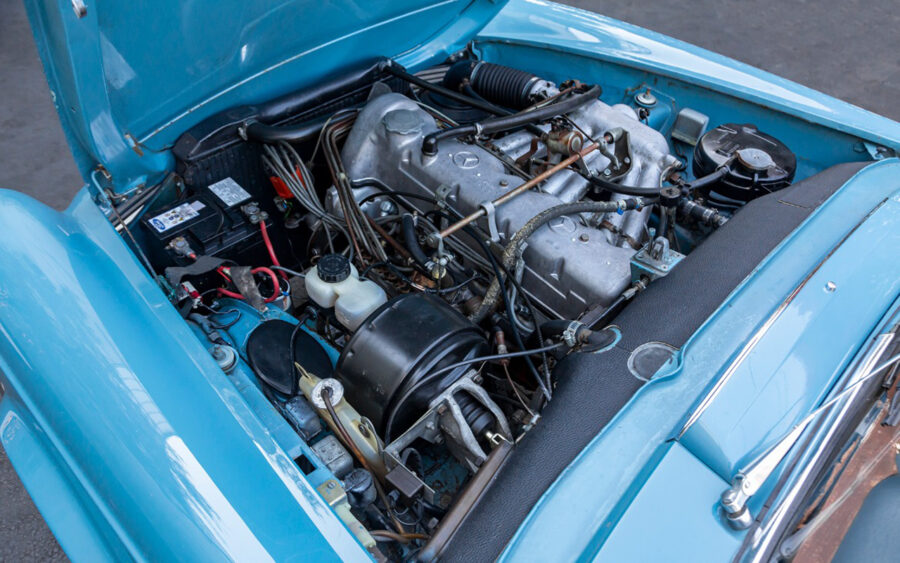
Bodywork and interior
Although W113s are hardy enough to be left outside and used every day, doing so will trap mud in the wings in front of the headlights, wear down the rubber seals on the doors and windscreen, damage the door cards in the interior, and warp the wooden base of the windscreen. Check all of these areas often to prevent costly issues later on in ownership.
While you might expect it to be a given, not all Pagoda SLs were supplied with hard tops. Fabric hoods can loosen around the door windows, and its mechanism can seize up, particularly if left folded under the hard top. Like many classic Mercedes, hoods, like replacement brightwork, doesn’t come cheap. Lubricating the hood mechanism – as well as erecting it on a regular basis – will keep it happy for as long as possible, as well as, of course, keeping it out of particularly bad or sunny weather.
MB-Tex was the standard upholstery in the Pagoda SL, and while it’s hard-wearing, too much exposure to sunlight can fade it, and the horsehair stuffing in the seats will eventually need replacing.
Finding a good example
Don’t discount a left-hand drive or US market car, particularly if they’re from a dry state. Located in California, Beverly Hills Car Club is ideally placed to help: it currently has many SL Pagodas in stock, almost spanning the model’s entire production run.
It also depends what you want out of your SL: if you’re happy to let the car do the work, and take in the views, you’re more likely to end up with a torquier 250 or 280, the majority of which were fitted with auto ‘boxes. Approximately 75 per cent of the 230 production run (1963-1967) were manuals with many Italian buyers opting for a five-speed over the standard four-speed unit. The latter specification, with a four-bearing crank, makes for a surprisingly revvy and drivable package, should the mood take you.
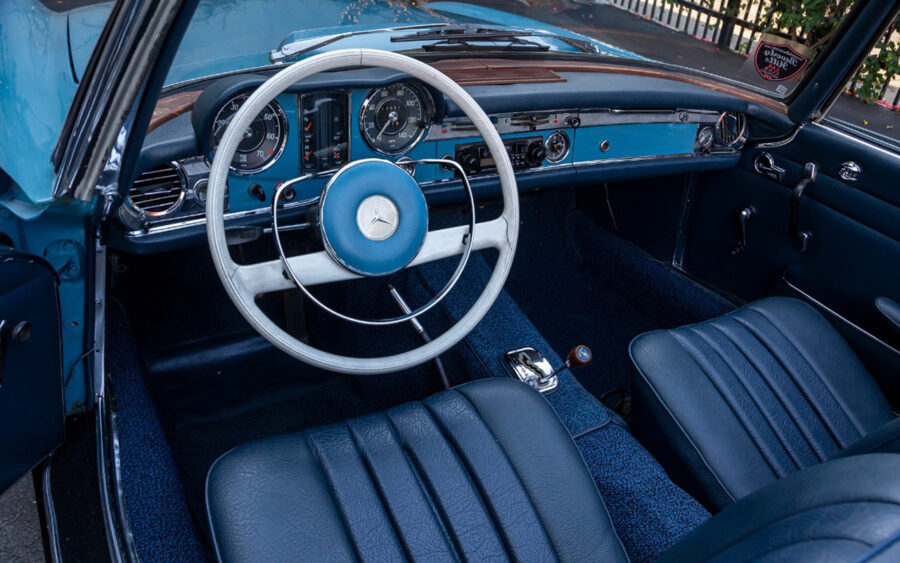
Sponsored by Beverly Hills Car Club
The automobiles sold at Beverly Hills Car Club combine all the elements of its exclusive address in Los Angeles: cars for sale that are the very last word in tasteful elegance, chic and impressive sophistication, with careful attention given to each vehicle and each client. Both national and international customers are catered for, with a huge stock of classics to choose from.
For more information and to view the Beverly Hills Car Club stock, visit beverlyhillscarclub.com

